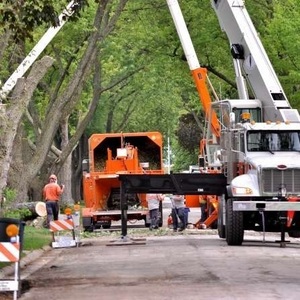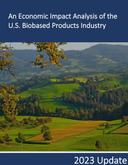Utilization of urban tree waste can help mitigate climate change







November 11, 2022
BY Yale School of the Environment
A multi-scale lifecycle assessment conducted by Prof. Yuan Yao and researchers from the Center for Industrial Ecology explains how eco-friendly uses for urban tree waste could substantially reduce greenhouse gas emissions in U.S. cities.
Cities are defined, by most, by their built environment: towering buildings, miles of roads and sidewalks, modes of transportation, and public utilities. But with the threats of climate change looming, researchers are looking for ways to turn vast swaths of natural areas in urban environments into tools to help offset the significant greenhouse gas emissions that cities produce.
In a recent study published in the journal One Earth, researchers from the Yale Center for Industrial Ecology conducted a multi-scale lifecycle assessment that explored methods for utilizing urban tree waste. Wide-scale adoption of more eco-friendly uses of urban tree waste could significantly reduce global warming potential in the United States, according to the researchers' findings.
Advertisement
Advertisement
“Cities have lots of trees and they will not live forever,” says co-author Yuan Yao, assistant professor of industrial ecology and sustainable systems. “You also have leaves and other tree waste. We wanted to investigate different ways we could use this waste, the potential pathways and benefits, to create something of value.”
According to Kai Lan, a postdoctoral researcher in Yao’s lab and the lead author of the study, there are roughly 50 million hectares of urban forest in the United States. As a result, more than 45 million dry tons of urban tree waste are generated every year in the United States — waste that usually ends up in landfills to be disposed of, contributing greatly to greenhouse gas emissions.
The study outlines several different methods for creating value from urban tree waste, including turning tree trunks into wood chips or lumber for wood products, composting leaves, and turning tree residue into biochar, a carbon-rich material made from biomass. Yao specifically highlighted the numerous applications for biochar, which include agriculture, energy, wastewater treatment, and carbon storage.
The researchers caution that the environmental benefits of new uses for urban tree waste will vary across states and cities. Bingquan Zhang, a postdoctoral researcher in Yao’s lab and an author of the study, says that several major U.S. cities have developed urban tree management strategies and that those efforts should be expanded.
Advertisement
Advertisement
“I hope this paper can provide some quantitative evidence that programs like these are working in climate mitigation efforts,” says Yao, who added that she also hopes this study lays the foundation for global collaboration on the topic.
“This all aligns with the circular economy concept — turning waste into something of value,” says Lan. “But it’s not just traditional waste, like plastic or paper. Tree waste is very important, too.”
Related Stories
The U.S. Department of Energy Bioenergy Technologies Office (BETO) announced up to $23 million in funding to support research and development (R&D) of domestic chemicals and fuels from biomass and waste resources.
The U.S. DOE has announced its intent to issue funding to support high-impact research and development (R&D) projects in two priority areas: sustainable propane and renewable chemicals and algal system cultivation and preprocessing.
Sens. Sherrod Brown, D-Ohio, and Pete Ricketts, R-Neb., in August introduced the Renewable Chemicals Act, a bill that aims to create a tax credit to support the production of biobased chemicals.
The Chemical Catalysis for Bioenergy Consortium, a consortium of the U.S. DOE’s Bioenergy Technologies Office, has launched an effort that aims to gather community input on the development of new biomass processing facilities.
USDA on March 8 celebrated the second annual National Biobased Products Day, a celebration to raise public awareness of biobased products, their benefits and their contributions to the U.S. economy and rural communities.
Upcoming Events










